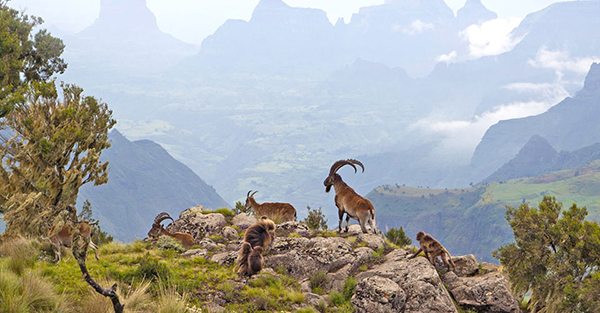Ethiopia
Ethiopia is a landlocked country located in the Horn of Africa, with its capital Addis Ababa or sweating in the name of the New Flower. It is Africa's second most populous country after Nigeria, the tenth most populous country, surrounded by Djibouti and Somalia to the east. North Eritrea, north-west Sudan, west Sudan, south-west Kenya, and found the oldest human structure, dating back to 4.4 million years.
The designation of Ethiopia
Ethiopia was formerly known as Abyssinia in relation to the Habash tribe, which migrated from the Yemen region to the heights of the Horn of Africa. This was after the destruction of the Marib dam. The name Ethiopia was officially used by the Ethiopian Emperor Menelik II, quoting King Isaana, The Ethiopian King of Ethiopia. This happened after his victory over Ethiopia, Nubian, and Ethiopia.
A Greek word from Ethops, consisting of two sections: Aethio and Aops, which means brown face or burnt face. The Greek historian Herodotus used it in his description of the lands of southern Egypt, in addition to Sudan, present Ethiopia and the Sahelian regions. The Roman historian Pleyonius the Great adds that the name of Aythiopus originates from the name of a son Hibistus is known as Ettiobus, meaning "mourning." Abyssinia is the name of the mixed and diverse species. This is evidence of the integration between Semites coming from South Arabia and Western Asia and among the indigenous Kushis of the region.
Wildlife in Ethiopia
Ethiopia has thirty-one species of mammals and is a global center for bird diversity, with more than eight hundred and fifty-six bird species, of which 20 are endemic in the country and 16 species are threatened with extinction. The number of people in the wild has rapidly declined due to tree cutting, large pollution, civil wars, overfishing, human interference with the environment, and a major drought that has had a significant impact on wildlife in the region.


ليست هناك تعليقات:
إرسال تعليق